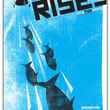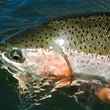Caddisflies are one of my favorite insects to imitate. In fact, the first rainbow I landed on a fly I tied myself came on the ubiquitous Elk Hair Caddis. Getting a hit on top is exciting, however if you want to increase your chances for catching fish, consider tying on a caddis pupa instead.
Emerging caddis pupa often spend a great deal of time drifting in the water before they make it to the surface. Dead drift this pattern near the bottom in the riffles or drift it near the surface.
When designing the MKCaddis Pupa, the goal was to create a semi-realistic pattern that was fishable but also simple to tie. The MKCaddis Pupa may be tied with or without weight depending on how you want to fish it.




























